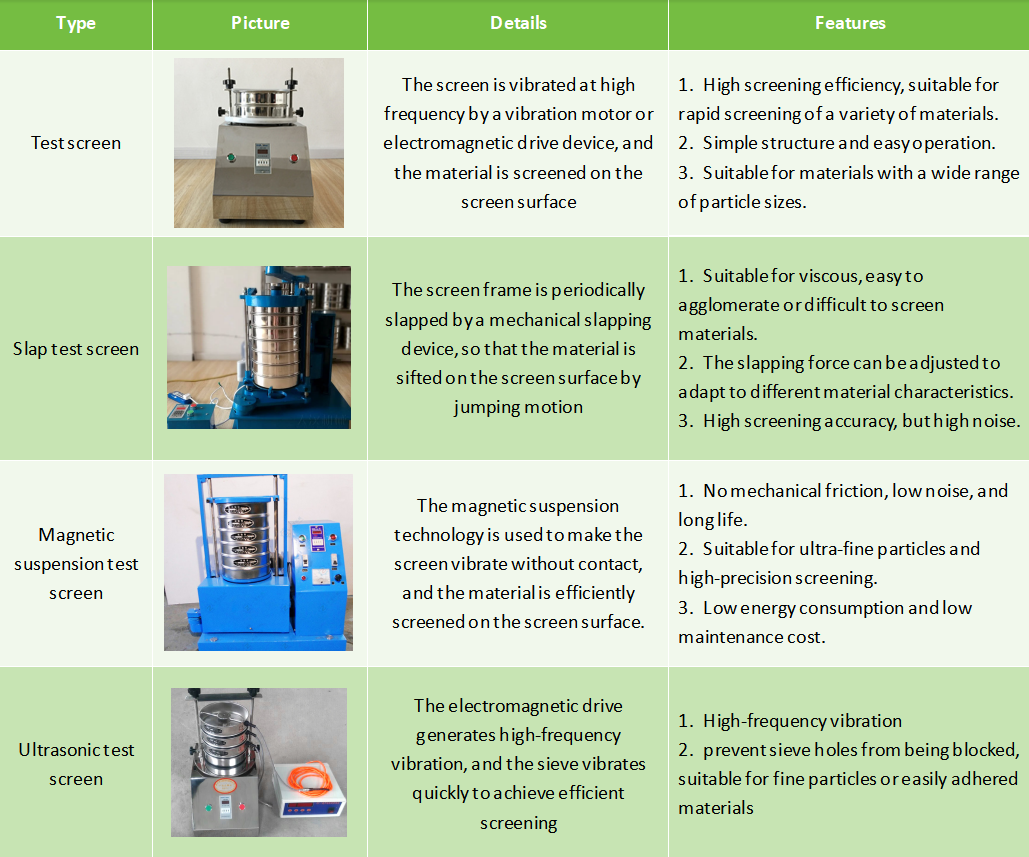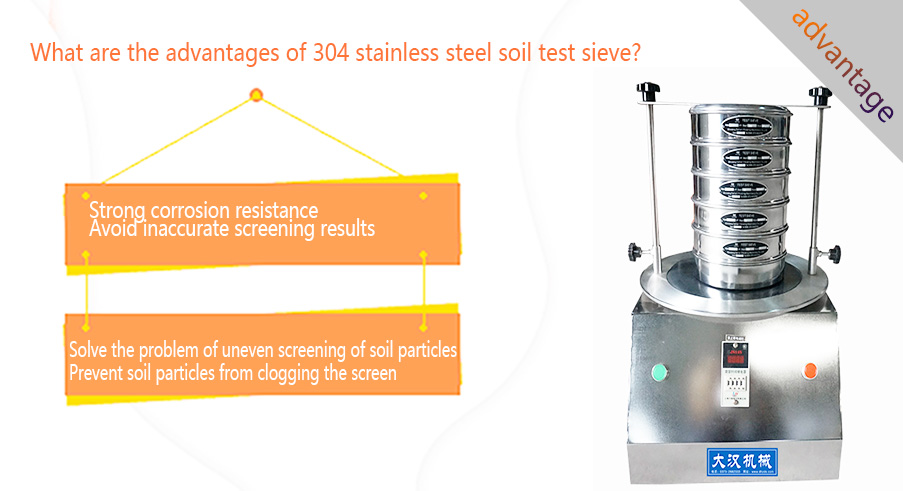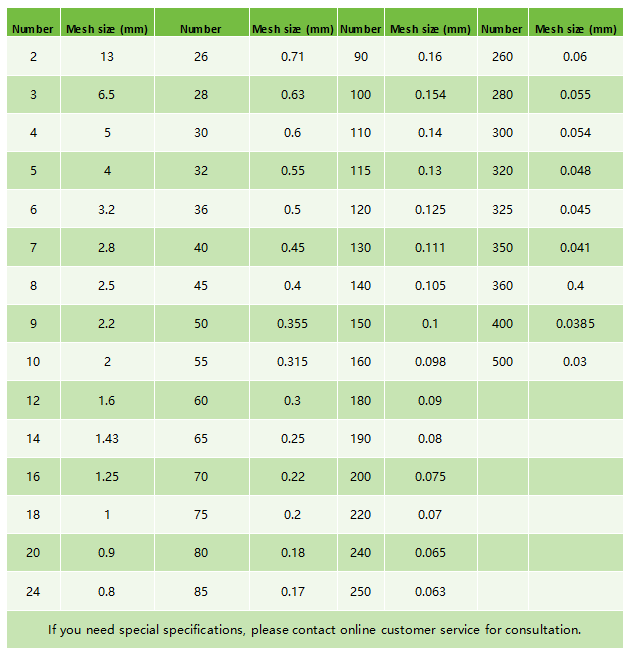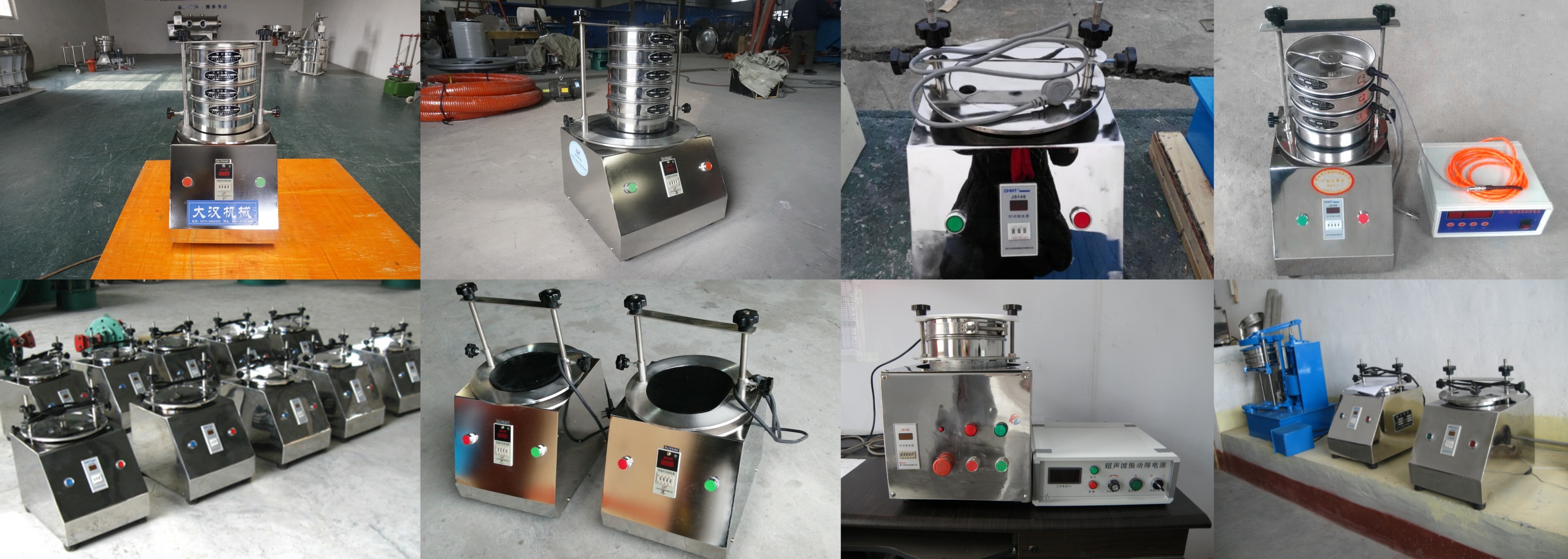Thursday February-27 2025 11:59:20

304 stainless steel soil test sieve is a professional screening equipment specially used for soil particle size analysis, particle classification and quality inspection. It is made of 304 stainless steel, with the characteristics of corrosion resistance, wear resistance and easy cleaning, and is widely used in soil research, agriculture, environmental monitoring, construction engineering and other fields.

It consists of a stainless steel frame and a stainless steel screen stretched on the frame. The apertures on the screen are of different sizes. By placing the soil sample on the sieve and vibrating it, soil particles of different sizes can be separated to obtain the particle size distribution of the soil.


1、High-quality material: Made of 304 stainless steel, it is corrosion-resistant, high-temperature-resistant, and not easy to rust, suitable for long-term use.
2、Precise screening: The mesh aperture is precise and meets international standards (such as ISO, ASTM, etc.), ensuring the accuracy of the screening results.
3、Multi-layer design: Multiple layers of mesh can be configured to achieve multi-level screening of soil particles.
4、Strong durability: The mesh and frame structure are sturdy, wear-resistant, and have a long service life.
5、Wide range of application: Not only suitable for soil analysis, but also for screening of sand, gravel, powder, and granular materials
Screen: 304 stainless steel woven mesh, aperture range from 0.025mm to tens of millimeters, can be selected according to needs.
Screen frame: Made of 304 stainless steel, with a solid structure, good rigidity and corrosion resistance.
Bottom cover and receiving tray: used to collect the screened material for subsequent analysis.
Fixer: used to fix the screen and screen frame to ensure that the screen does not loosen during the screening process.

1. Strong corrosion resistance: 304 stainless steel has excellent corrosion resistance, can resist corrosion from acids, alkalis and other substances in the soil, and extend the service life of the screen.
2. Avoid inaccurate screening results: screen wear, irregular screening operation, etc. Screen wear will affect the screening accuracy and should be replaced in time. Strictly follow the operating procedures for screening. Calibrate the screen regularly to ensure the accuracy of the screen hole size.
3. Solve the problem of uneven screening of soil particles: insufficient screening time, insufficient vibration intensity, inappropriate screen aperture, etc. Adjust the vibration intensity according to the properties of the soil to ensure the screening effect and ensure that the soil particles pass through the screen fully. Select the appropriate screen aperture according to the soil particle size distribution.
4. Prevent soil particles from clogging the screen: The soil contains more clay or organic matter, which is easy to clog the screen pores. Clean the screen regularly during the screening process to prevent clogging. For soils with greater viscosity, you can choose a screen with a larger aperture or a screening equipment with greater vibration intensity. Pre-treatment of the soil, such as dispersion and wetting, can reduce the occurrence of blockage.

Screen aperture: Choose the appropriate screen aperture according to the particle size range of soil particles. Common apertures are 0.075mm, 0.25mm, 0.5mm, 1mm, 2mm, 5mm, etc.
Screen layers: Single-layer screens are used for simple screening. Multi-layer screens (2-8 layers) are used for multi-stage screening to analyze the particle size distribution of soil.
Screen frame diameter: Common diameters are 200mm, 300mm, etc. Choose the appropriate size according to the sample size.
Standard compliance: Choose a screen that meets international standards (such as ISO, ASTM) to ensure the accuracy of the experimental results.


1. Agricultural field: According to the particle size of soil particles, the soil is divided into sand, loam, clay, etc., providing a basis for selecting suitable planting varieties for crops. According to the soil texture, the appropriate type and amount of fertilizer are selected to improve the utilization rate of fertilizer.
2. Environmental monitoring: By analyzing the heavy metal content of particles of different particle sizes in the soil, the degree of soil pollution is evaluated. Detect the distribution of pollutant particles in the soil and evaluate the soil quality. Analyze the migration law of particles of different particle sizes during soil erosion. Evaluate soil quality and provide a scientific basis for ecological environmental protection.
3. Construction engineering: According to the particle size distribution of aggregates, determine the mix ratio of concrete to ensure the strength and durability of concrete. Used for screening and quality inspection of building materials such as sandstone and aggregates. Determine the particle size composition of soil to provide a basis for determining soil mechanics parameters.
4. Laboratory research: Used for screening experiments of soil, powder, and granular materials in the laboratory. By analyzing the particle size composition of the soil, determine the physical properties of the soil such as permeability and aeration, and provide a scientific basis for soil improvement.

Preparation before screening: Make sure the soil sample is dry to avoid damp materials clogging the screen. Check whether the screen is intact to avoid damage affecting the screening results.
Sieving operation: Pour the soil sample evenly into the screen to avoid excessive accumulation. Use a vibrating sieving machine or manual sieving to ensure sufficient screening.
Cleaning and maintenance: After the screening is completed, clean the screen and screen frame in time to avoid material residue. Check the screen regularly for damage and replace it in time.
Storage and maintenance: Store in a dry and ventilated environment to avoid moisture and corrosion.
304 stainless steel soil test sieve is an important tool for soil analysis and particle screening, with the advantages of high precision, strong durability and easy cleaning. Through reasonable selection and correct use, the efficiency and accuracy of soil analysis can be significantly improved, providing reliable data support for soil research, agriculture, environmental monitoring and other fields.
laboratory test sieve is also called standard sieve, test sieve, laboratory vibrating screen, sample sieve, inspection sieve, standard analysis sieve...
What Is An Electromagnetic Sieve Shaker?
Electromagnetic sieve shaker is a screening equipment used for testing and laboratory research. It is often used to screen and classify small batches...
Test sieve shaker is a laboratory equipment used for particle screening and classification, also known as laboratory shaker or laboratory vibrating...
Phosphate Test Sieve is an experimental tool used to screen different particle sizes in phosphate samples and detect the phosphate...
Feb 27, 2025
304 stainless steel soil test sieve
304 stainless steel soil test sieves are essential tools for accurate soil particle size analysis. Ma...
Feb 27, 2025
Laboratory powder test sieve is an essential instrument used for screening and grading powder or gran...
Feb 27, 2025
Soil Aggregate Sand Test Sieve
What is a soil aggregate sand test sieve? Soil aggregate sand test sieve is an instrument specially u...
Feb 27, 2025
What is a mineral analysis test sieve? Mineral analysis test sieve is an important tool specially use...
![]()
Then we look forward to hearing from you
Contact Us
Industrials
Yanjin county forest park gate to the west 1000 meters north road sitemap
